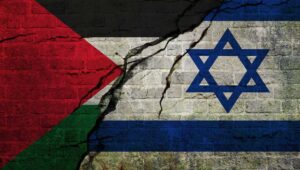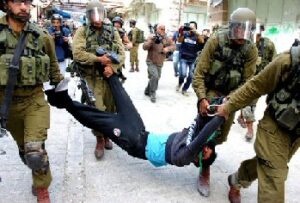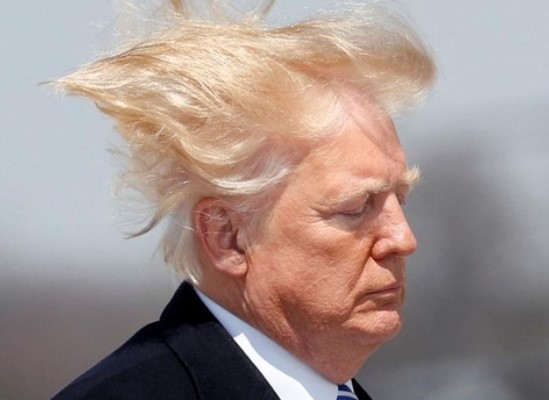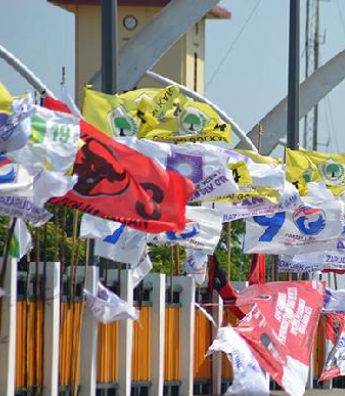
STRATEGIC ASSESSMENT. Fighting between Israel and militants based in the Gaza Strip flared anew in early August. This latest bout of fighting comes fifteen months after an eleven-day conflict between Israel and Hamas, the Islamist Palestinian group that exercises de-facto control over Gaza, though the territory has been blockaded by Israel for fifteen years. The latest fighting erupted after Israel conducted an airstrike that killed a senior commander of Palestine Islamic Jihad (PIJ), a militant group that is far smaller than Hamas and much more closely aligned with Tehran. Moreover, in contrast to Hamas, PIJ does not exercise governing authority in Gaza and does not recognize itself as duty-bound to protect civilians or the Gaza economy. Israel said it acted against the militant group because of concrete threats of an imminent attack, following days of tension resulting from Israel’s arrest of a senior PIJ member in the occupied West Bank. On August 7, as exchanges of air strikes and rocket fire expanded, Israel said it killed a second senior PIJ commander in a crowded Gaza refugee camp.

By late August 7, when an Egypt-brokered truce went into effect, 46 Palestinians had been killed, 20 of whom were civilians, including 15 children, according to the Palestinian Ministry of Health. During the three days of violence, 360 Palestinians were injured. These figures likely include casualties that resulted from projectiles launched by PIJ that fell short of their targets and impacted within the Gaza Strip. The high number of casualties, however, is also evidence of Israeli authorities’ willingness to engage targets in populated areas despite the likelihood of civilian casualties. The high death toll also demonstrates an inability to completely eliminate collateral damage in high-risk areas despite Israel’s use of precision guided munitions. Caretaker Prime Minister Yair Lapid unleashed the offensive less than three months before a general election in which he faces a stiff challenge from former longtime Prime Minister Binyamin Netanyahu, who has consistently followed a hard line against Iran, Palestinians, and perceived threats to Israeli security. Should the truce hold, this current round will likely be perceived as a success for Lapid and enhance his security credentials.
The Israeli Defense Forces said that the Gaza militants fired over 1,000 rockets and other projectiles toward Israel during the three days of fighting. 20% of the rockets and mortars fired by Palestinian militants fell short of their targets and in three cases caused civilian casualties within the Gaza Strip. The Israeli military said that its Iron Dome air defense system had intercepted about half of the projectiles, two of which had been fired toward Jerusalem. No Israelis were killed in the fighting, however, 17 were injured, including nine children. Inhabitants of several cities in southern Israel were forced to shelter in bunkers or flee to areas further north. Material damage to some Israeli homes and infrastructure was reported.

Contrary to expectations, Hamas did not enter the fray this time. Hamas fought an 11-day war with Israel in May 2021, which ended in a ceasefire brokered by Egypt and Qatar and left about 256 Palestinians and 13 Israelis dead according to the U.N. High Commissioner for Human Rights (OHCHR). Hamas leadership reportedly feared that joining the new clashes would risk undoing the 2021 ceasefire agreement with Israel, including the provision of about 12,000 work permits for Gazan residents, and potentially another 2,000. Aside from the benefits provided by the employment opportunities for the individuals and their families, the program has helped Hamas enhance its political control over Gaza. Additionally, Hamas did not want to provoke Israeli reprisals that could destroy significant Gaza infrastructure. The three days of fighting did, however, halt the operations of the lone power plant in Gaza due to lack of fuel supplies, and threatened the ability of Gaza’s hospitals to treat wounded civilians. The disruption limited Gazans to only four hours of electricity a day, increasing their reliance on private generators and deepening the territory’s chronic power crisis amid peak summer heat.
The potential for the Israel-PIJ fighting to destabilize the region and worsen the humanitarian situation in Gaza motivated regional powers to try to end the fighting quickly. However, PIJ is armed and advised by Iran’s Islamic Revolutionary Guard Corps (IRGC), and it is widely considered a “proxy of Tehran” – a relationship that attracts enhanced Israeli scrutiny. It also has a headquarters in Damascus under the protection of the regime of Syrian President Bashar al Assad, who is also closely supported by Iran. In contrast to Hamas, which negotiates border crossing arrangements and other matters with Egypt, and whose leaders engage Qatar, PIJ is not close to – or extensively influenced by – any Arab leaders other than perhaps Assad, who remains politically isolated. The Israel-PIJ clashes therefore carried the potential to expand into a broader Israel-Iran conflict, escalating what is already a low level conflict between Tehran and Jerusalem. Yet, Cairo apparently was able to exercise sufficient leverage in Gaza politics and use its longstanding ties to Israeli leaders to broker a truce.

The truce formally went into effect on August 7, just before midnight, and appears to be holding. The following day, Israel began lifting its blockade of the Gaza Strip, allowing the first fuel tanks to enter. In a statement, U.S. President Joseph Biden praised the agreement and called on all parties “to fully implement [it] and to ensure fuel and humanitarian supplies are flowing into Gaza.” He also urged that reports of civilian casualties should be investigated in a timely manner. United Nations negotiators also reportedly assisted Egypt with the mediation efforts. On August 8, Ireland called a U.N. Security Council meeting on the Middle East to address the conflict. U.N. Special Coordinator for the Middle East Peace Process, Tor Wennesland briefed the Council and shared updates on the conflict, telling Council members: “I condemn the indiscriminate launching of rockets from highly populated residential neighborhoods in Gaza into civilian populated centers in Israel, which puts at risk both Palestinian and Israeli civilians and violates international humanitarian law.” He went on to warn that tension in Gaza and in the occupied West Bank remained high, despite the cessation of hostilities. Even if the truce holds, the August violence between Israel and Palestinian militants in Gaza underscores the tenuous nature of the current status quo. Few, if any, expect that the latest round of fighting will be the last.









